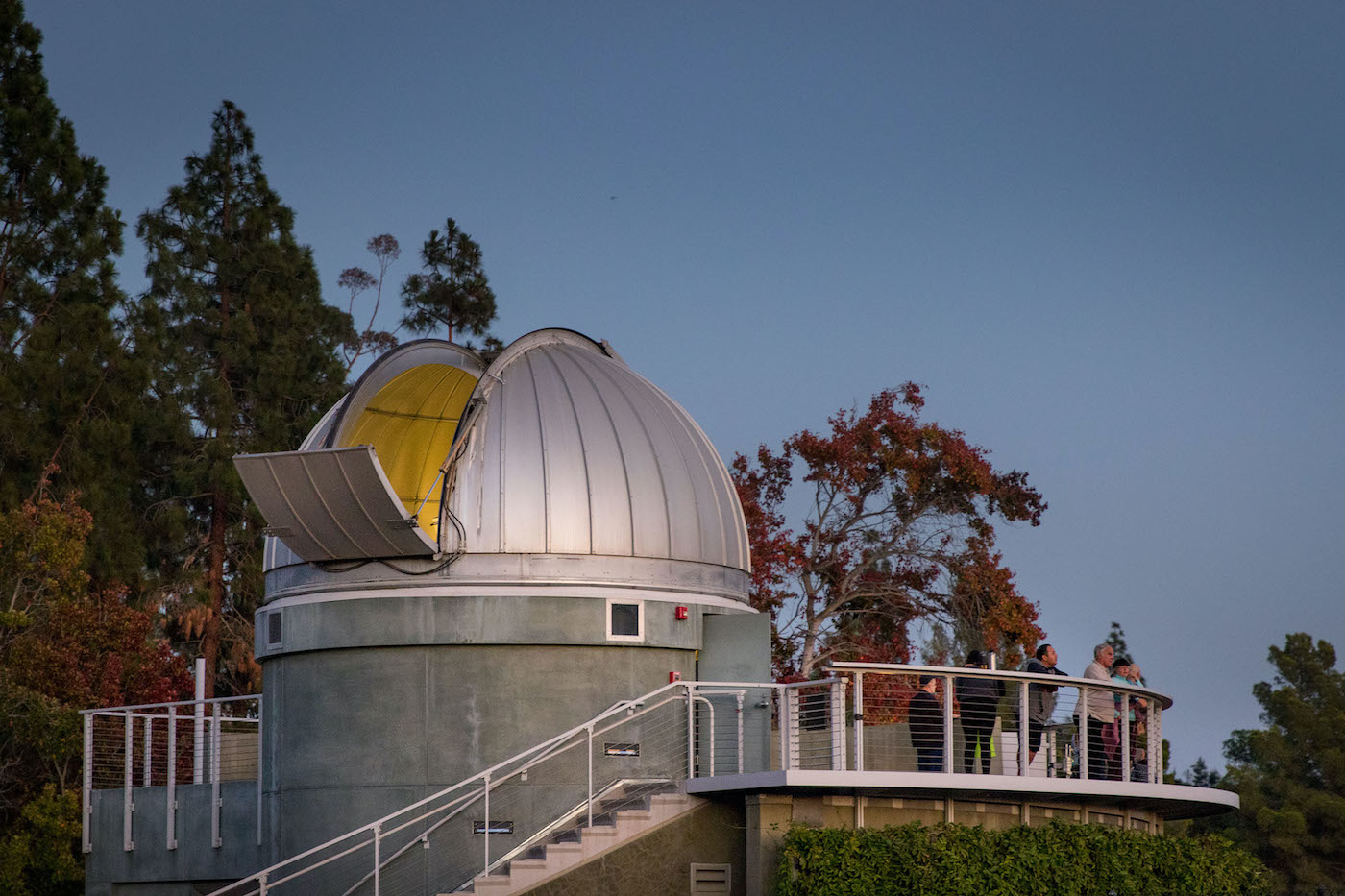Stargazing Features Great Nebula

This month’s Stargazing at the Westmont Observatory features a diverse celestial menu of planets, Messier objects, open clusters, and double stars on Friday, Feb. 17, beginning about 6 pm and lasting for several hours. The observatory, home of the powerful Keck Telescope, is open to the public every third Friday of the month and held in conjunction with the Santa Barbara Astronomical Unit (SBAU), whose members bring their own telescopes to share with the public.
Free parking is available near the Westmont Observatory, which is between the baseball field and the track and field/soccer complex. To enter Westmont’s campus, please use the Main Entrance off of La Paz Road. The lower entrance off of Cold Spring Road is closed to visitors after 7 pm. In case of inclement weather, call the Telescope Viewing Hotline at (805) 565-6272 to see if the viewing has been canceled.
The evening will begin with Venus and Jupiter close together in the western sky. Although they may be too low for Westmont’s telescopes, a member of the SBAU may be able to show them in his or her telescope.
Orion, the hunter, will be high in the sky and perfect for viewing. “Westmont’s 8-inch refractor telescope should be able to show all the splendor in M42, the Great Nebula in Orion’s sword,” says Thomas Whittemore, emeritus instructor of physics and SBAU member. “Turning the refractor to Orion’s head and the star Meissa will reveal a beautiful open cluster in the Collinder catalog, named for Swedish astronomer Per Collinder, who cataloged more than 400 of these wonderful open clusters in the 1930s.”
The stunning open cluster M41 is in Canis Major, one of Orion’s hunting dogs, below Sirius, the dog star. “Sometimes called the Little Beehive, M41 hosts a collection of twinklers which lie about 2,300 light-years away from us,” Whittemore says. “Keep in mind, the light from these stars has been on its way before the birth of Christ. In a good, dark sky, this cluster is bright enough to be seen with the naked eye.”
Another favorite is the star Tau Canis Majoris, which lies in the lower quarters of Canis Major. “Tau Canis Majoris is a double star with a beautiful collection of stars that comprise a stunning background field,” Whittemore says.
Whittemore says he also enjoys asterisms, patterns of stars that may or may not belong to one constellation. “One of my favorites for the public is one that has no name,” he says. “It’s a triangle of stars: Procyon (in Canis Minor), Sirius (in Canis Major) and the bright star in Orion, Rigel. The public should ask an SBAU member with a green laser to point to this triplet.”
Looking to the south, Procyon will appear to be yellow. Sirius is scorching white and Rigel is blue-white. “The colors reflect the stars’ surface temperatures, yellow being the coolest of the three, and white and blue-white the hottest.







